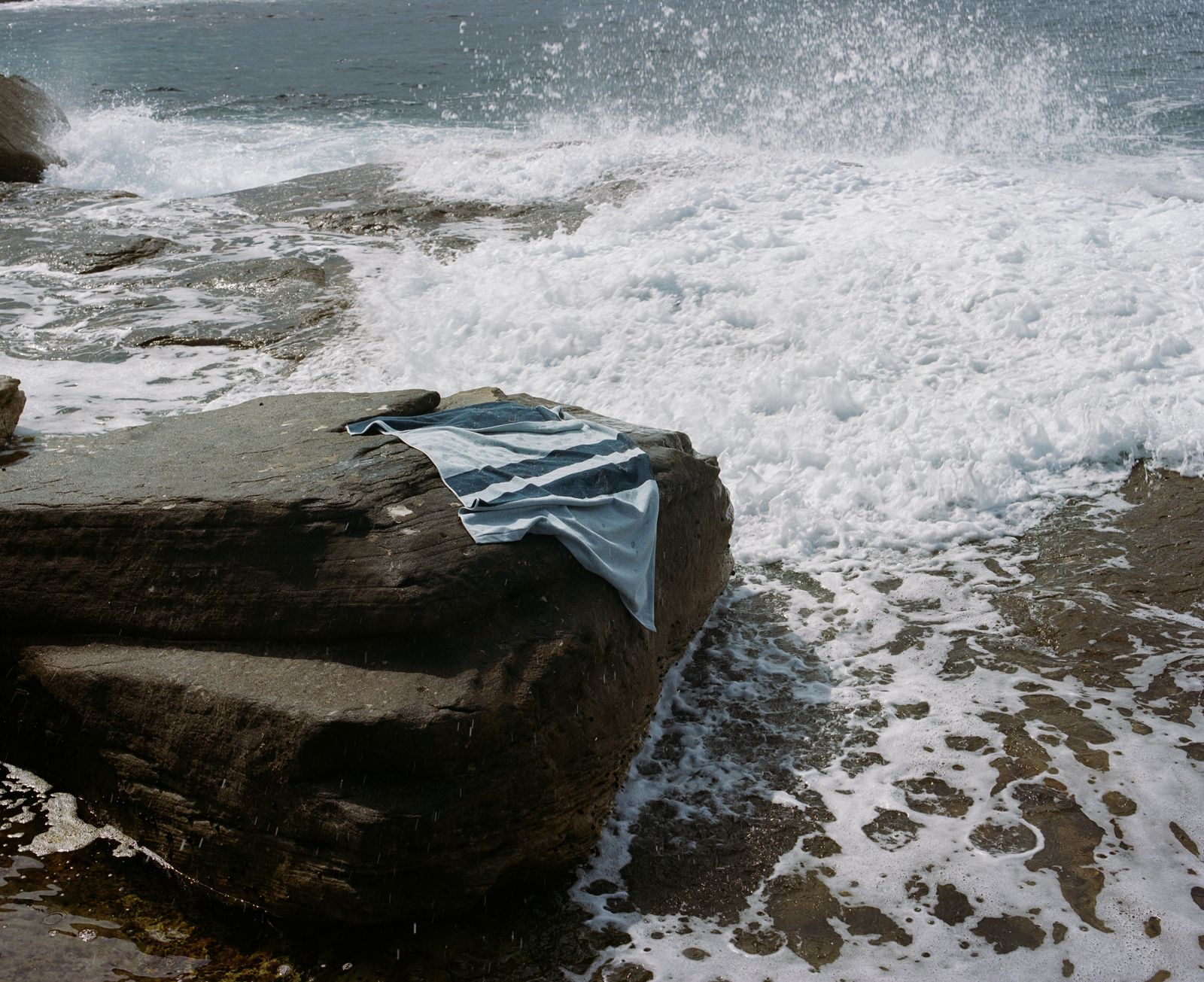BAINA towelling is made from 100% certified organic cotton in a carefully considered weight to balance softness and absorption.

Above: BAINA on an Antipodean coastline. Captured by Rob Tennent.
Made from 100% certified Organic Cotton
Organic cotton is soft, durable, natural and biodegradable. It is a fibre that becomes stronger when wet, which makes it ideal for towelling. Compared to other common towelling fibres, organic cotton is preferred for its superior absorbency, hand-feel and reduced environmental impact.
BAINA towelling is made from 100% Global Organic Textile Standard (GOTS) certified cotton (CU 1118891). This standard regulates the entire supply chain to reduce environmental impact, create a safer working environment and enhance biodiversity. Unlike conventional cotton which is linked to soil degradation and pollution, organic cotton is produced without chemical fertilisers, pesticides, synthetic dyes and genetic modification. For these reasons it’s also better for the wellbeing of farmers; they are not exposed to chemicals that can cause health problems, while also being able to charge a premium for their crops leading to fairer wages and better quality of life.
We believe that what we use on our skin should always be a consideration. Organic cotton is less likely to irritate those with sensitive skin.
Generous Weight
We use a generous weight of 380gsm through to 950gsm. A decision made with intent to equally favour design and functionality. The highly considered density of each piece provides a soft handle, whilst also being light enough to dry in time for the most regular of bathers.

Above: Georgah and BAINA. Captured by Rob Tennent.
Thoughtfully Produced in Portugal
BAINA towels are manufactured in Portugal, a country renowned for its high-quality textiles and home to some of the most skilled and established towelling mills in the world. Our mill is one of the most sought-after cotton terry mills in Europe, producing a quality we can personally stand by, ensuring confidence in the longevity of your towelling.
Considered Construction
BAINA towels are constructed using a 2-ply twist. This is an extra detail in the weaving process, whereby two cotton fibres are twisted together making a rope-like yarn. This creates a higher absorbency, drawing moisture to the base of the towel, rather than ‘pushing it around’ like many conventional towels.